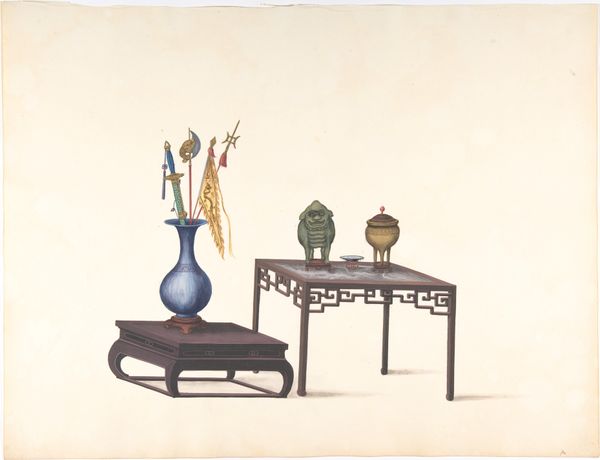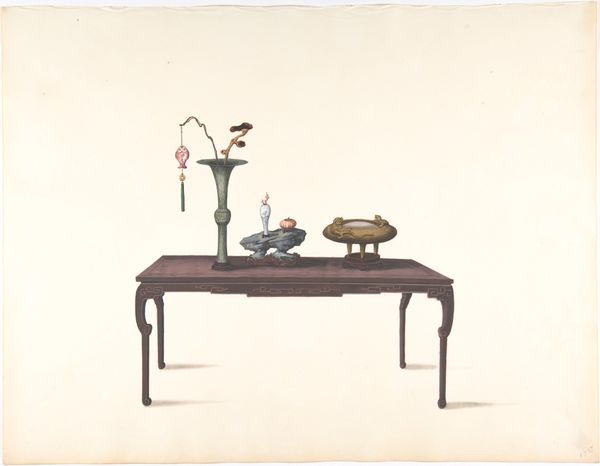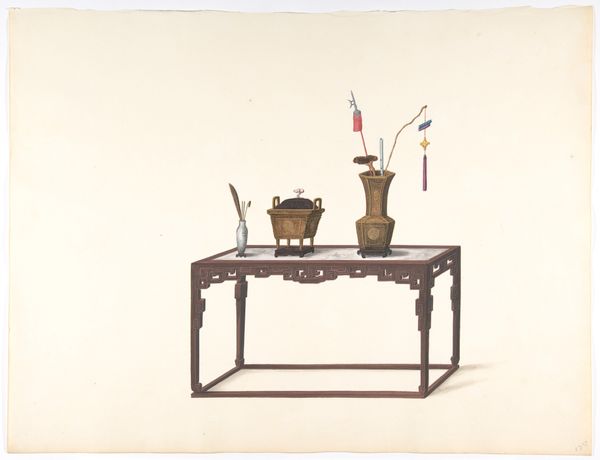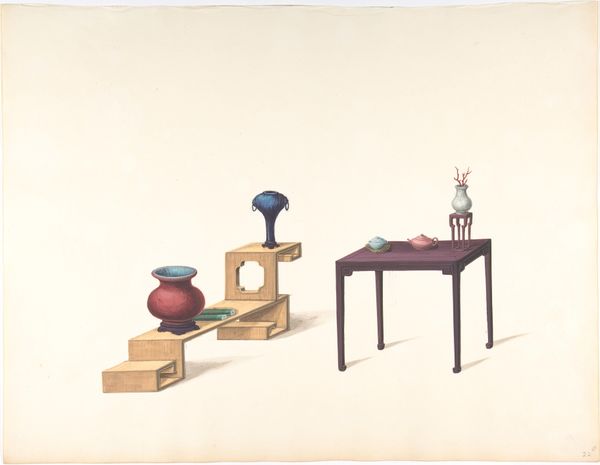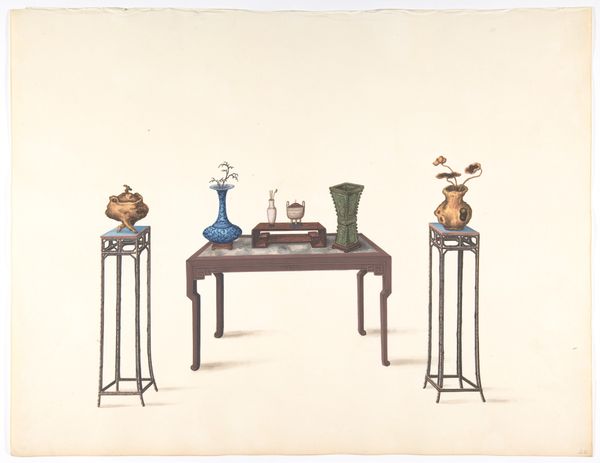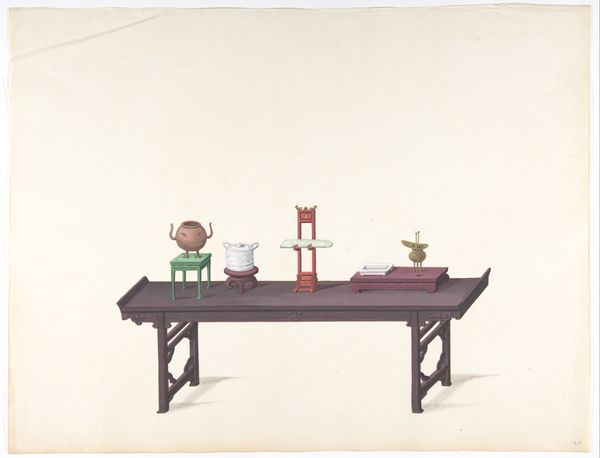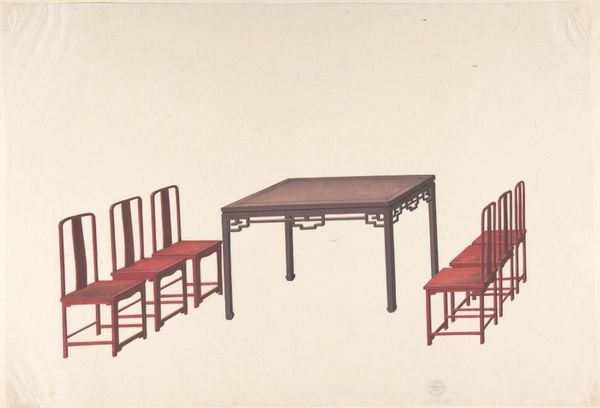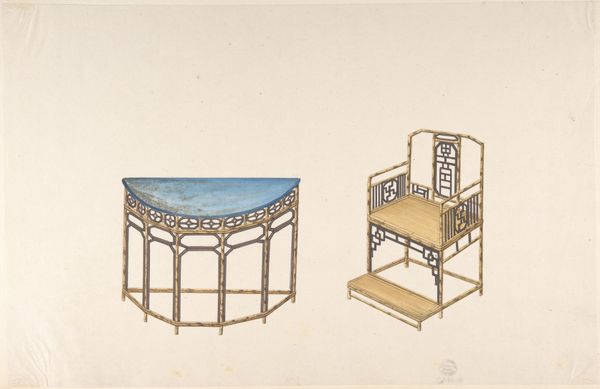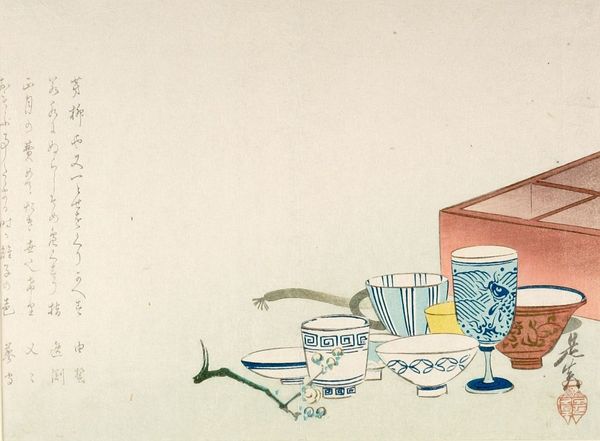
Two Tables with a Purple Finish, One with a Red Vase, the Other with Three Vases 1800 - 1900
0:00
0:00
drawing, coloured-pencil, print
#
drawing
#
coloured-pencil
# print
#
asian-art
#
vase
#
coloured pencil
#
decorative-art
#
watercolor
Dimensions: Overall: 14 1/8 x 18 3/8 in. (35.9 x 46.7 cm)
Copyright: Public Domain
Editor: We are looking at a print from sometime between 1800 and 1900, entitled "Two Tables with a Purple Finish, One with a Red Vase, the Other with Three Vases." It depicts exactly that – two ornate tables in colored pencil and what looks like watercolor. It feels deliberately arranged. What can you tell us about its context? Curator: Well, first off, it’s important to note this work is located within the Metropolitan Museum of Art’s collection of Asian Art. So let’s consider its intended audience and purpose. It isn't simply a decorative still life. Instead, given its medium and precise, almost diagrammatic rendering, could this have been a study intended for mass production or as a reference guide to display prized possessions? Editor: A reference guide? I hadn't considered that. Curator: Precisely! And notice the carefully depicted tables. Their design reflects particular tastes, values and perhaps even social standing. Are these depictions acting as status symbols for the intended viewers, showcasing the latest trends? Do you think it would appeal to Western audiences or strictly for Asian audiences? Editor: Hmm, that's tricky. It feels distinctly Asian, especially with the sparse arrangement. But I can also see it fitting into the Western fascination with "chinoiserie" during that period. Curator: Excellent point! Consider how European tastes shaped the demand for, and the representation of, Asian goods. The very act of isolating these objects on the page speaks to a collecting impulse, both literally and perhaps, more broadly. How would the perception of the drawing change if more contextual elements were depicted? Editor: I now view it as a social object, hinting at larger cultural exchanges and power dynamics. Thank you. Curator: Exactly! Recognizing this print within a broader history of collecting and representation unveils its complexity and invites us to consider the sociopolitical implications of its display, both then and now.
Comments
No comments
Be the first to comment and join the conversation on the ultimate creative platform.
